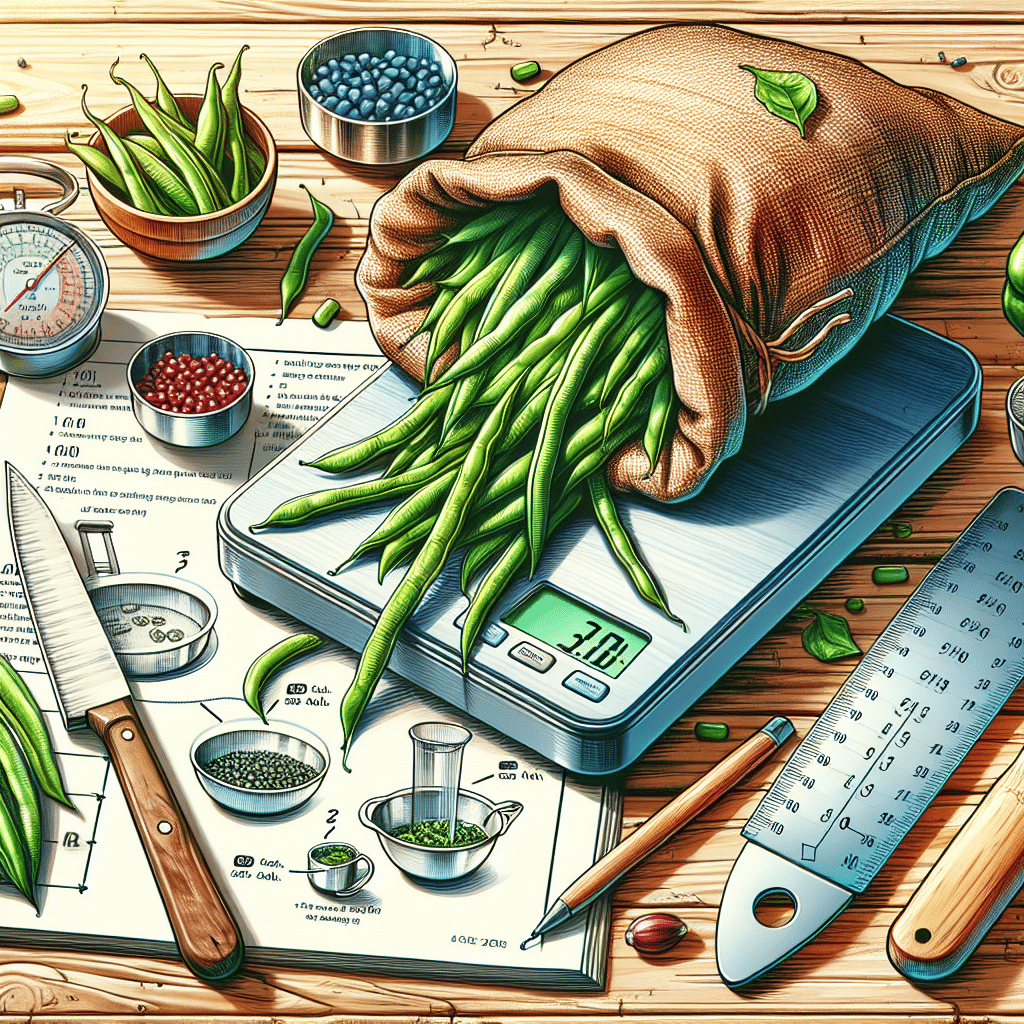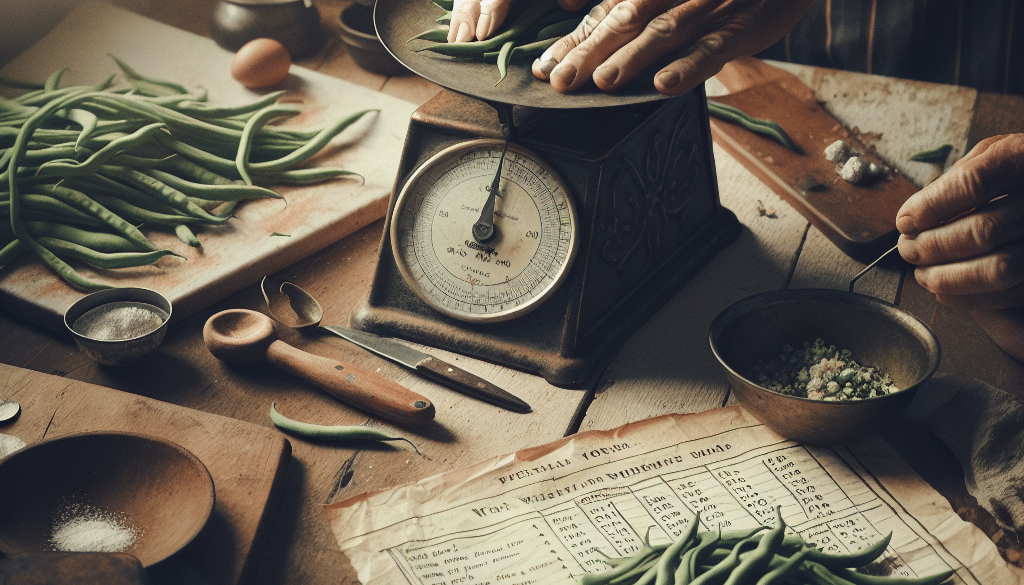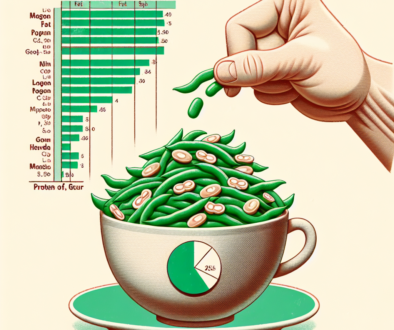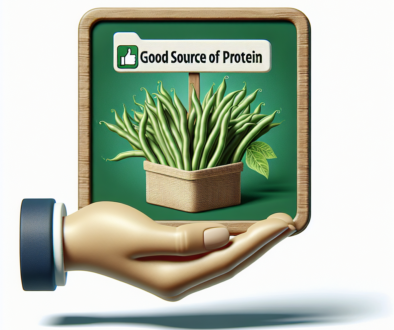Weight Measurements in Cooking Green Beans
-
Table of Contents
- Green Beans Weight Measurements: Essential Guide for Cooking Perfection
- Understanding the Importance of Weight Measurements
- Standard Weights and Measures for Green Beans
- Choosing the Right Scale for Accurate Measurements
- Weight vs. Volume: Which is Better for Green Beans?
- How Weight Affects Cooking Time and Methods
- Case Studies: The Impact of Precise Weight Measurements
- Statistics: The Role of Weights in Recipe Success
- Practical Tips for Measuring Green Beans
- Recipes and Examples: Green Beans Done Right
- Conclusion: The Significance of Weights in Green Bean Preparation
- Discover ETprotein’s High-Quality Protein Products
Green Beans Weight Measurements: Essential Guide for Cooking Perfection

Green beans, a staple in many kitchens, are not only nutritious but also versatile. They can be steamed, boiled, roasted, or stir-fried, making them a popular choice for a variety of dishes. However, achieving the perfect texture and flavor often comes down to precise weight measurements in cooking. This comprehensive guide will delve into the importance of weight measurements when cooking green beans, offering valuable insights and practical tips to ensure your green beans are always cooked to perfection.
Understanding the Importance of Weight Measurements
Weight measurements play a crucial role in cooking, especially when it comes to vegetables like green beans. The consistency in weight ensures even cooking and helps in maintaining nutritional value, taste, and texture. It also aids in recipe standardization, which is particularly important for chefs and home cooks who aim for consistent results every time.
Standard Weights and Measures for Green Beans
Before diving into the specifics of cooking green beans, it’s essential to understand the standard weights and measures commonly used in recipes:
- 1 pound of green beans = approximately 3 to 4 cups (trimmed and cut)
- 1 cup of trimmed green beans = about 100 grams
- 1 ounce of green beans = approximately 28 grams
These standard conversions can help you estimate the amount of green beans needed for a recipe or adjust the quantities based on the number of servings required.
Choosing the Right Scale for Accurate Measurements
When measuring green beans by weight, it’s important to use a kitchen scale that is accurate and easy to read. Digital scales are preferred for their precision and the ability to switch between different units of measurement. Ensure that the scale is calibrated correctly and always tare it with the container you’ll be using to hold the green beans.
Weight vs. Volume: Which is Better for Green Beans?
While some recipes may provide volume measurements for green beans, weight measurements are generally more accurate. This is because the volume can vary greatly depending on how the green beans are cut or how tightly they are packed into a measuring cup. Weight measurements eliminate this variability, leading to more consistent cooking results.
How Weight Affects Cooking Time and Methods
The weight of green beans can significantly influence cooking time and methods. For instance, a larger quantity of green beans may require a longer cooking time or a different cooking method to ensure they are cooked evenly. It’s important to adjust your cooking process based on the weight of the green beans to achieve the desired texture and flavor.
Case Studies: The Impact of Precise Weight Measurements
Several case studies have shown that precise weight measurements can make a significant difference in the outcome of a dish. For example, a study conducted by a culinary school found that dishes prepared with accurately weighed ingredients resulted in higher satisfaction among taste testers compared to those prepared with volume measurements.
Statistics: The Role of Weights in Recipe Success
Statistics from cooking surveys and research indicate that recipes with weight measurements have a higher success rate among home cooks. This is likely due to the elimination of guesswork and the increased precision that weight measurements provide.
Practical Tips for Measuring Green Beans
Here are some practical tips to ensure accurate weight measurements when cooking green beans:
- Always start with a preheated scale to ensure accuracy.
- Trim the ends of the green beans before weighing to get the net weight of the usable portion.
- If your recipe calls for cut green beans, cut them before weighing to account for any loss during the cutting process.
- For recipes that require blanching, weigh the green beans after blanching, as they may lose some weight during the process.
Recipes and Examples: Green Beans Done Right
To illustrate the importance of weight measurements, let’s look at a few recipes where the weight of green beans is key to the dish’s success:
- Green Bean Almondine: Requires precise weight measurements to balance the flavors and textures of the green beans with the almonds and seasonings.
- Green Bean Casserole: The classic holiday dish relies on accurate weight measurements to ensure the right ratio of green beans to the creamy mushroom sauce and crispy fried onions.
- Stir-Fried Green Beans: In this quick-cooking dish, the weight of the green beans determines how much oil and seasoning is needed for optimal flavor.
Conclusion: The Significance of Weights in Green Bean Preparation
In conclusion, understanding and implementing precise weight measurements in cooking green beans is essential for achieving the perfect texture, flavor, and nutritional value. By following the guidelines and tips provided in this article, you can ensure that your green bean dishes are consistently delicious and satisfying.
Discover ETprotein’s High-Quality Protein Products
After mastering the art of cooking green beans with perfect weight measurements, consider complementing your healthy meals with ETprotein’s range of protein products. Whether you’re looking to enhance your diet with plant-based proteins or seeking high-quality ingredients for your food business, ETprotein offers a variety of options to meet your needs.
About ETprotein:
ETprotein, a reputable protein Chinese factory manufacturer and supplier, is renowned for producing, stocking, exporting, and delivering the highest quality organic bulk vegan protein and plant proteins. They include Organic rice protein, clear rice protein, pea protein, clear pea protein, pumpkin seed protein, sunflower seed protein, mung bean protein, etc. Their offerings, characterized by a neutral taste, non-GMO, allergen-free attributes, cater to a diverse range of industries. They serve nutraceutical, pharmaceutical, cosmeceutical, veterinary, as well as food and beverage finished product distributors, traders, and manufacturers across Europe, USA, Canada, Australia, Thailand, Japan, Korea, Brazil, and Chile, among others.
ETprotein specialization includes exporting and delivering tailor-made protein powder and finished nutritional supplements. Their extensive product range covers sectors like Food and Beverage, Sports Nutrition, Weight Management, Dietary Supplements, Health and Wellness Products, and Infant Formula, ensuring comprehensive solutions to meet all your protein needs.
As a trusted company by leading global food and beverage brands and Fortune 500 companies, ETprotein reinforces China’s reputation in the global arena. For more information or to sample their products, please contact them and email sales(at)ETprotein.com today.












